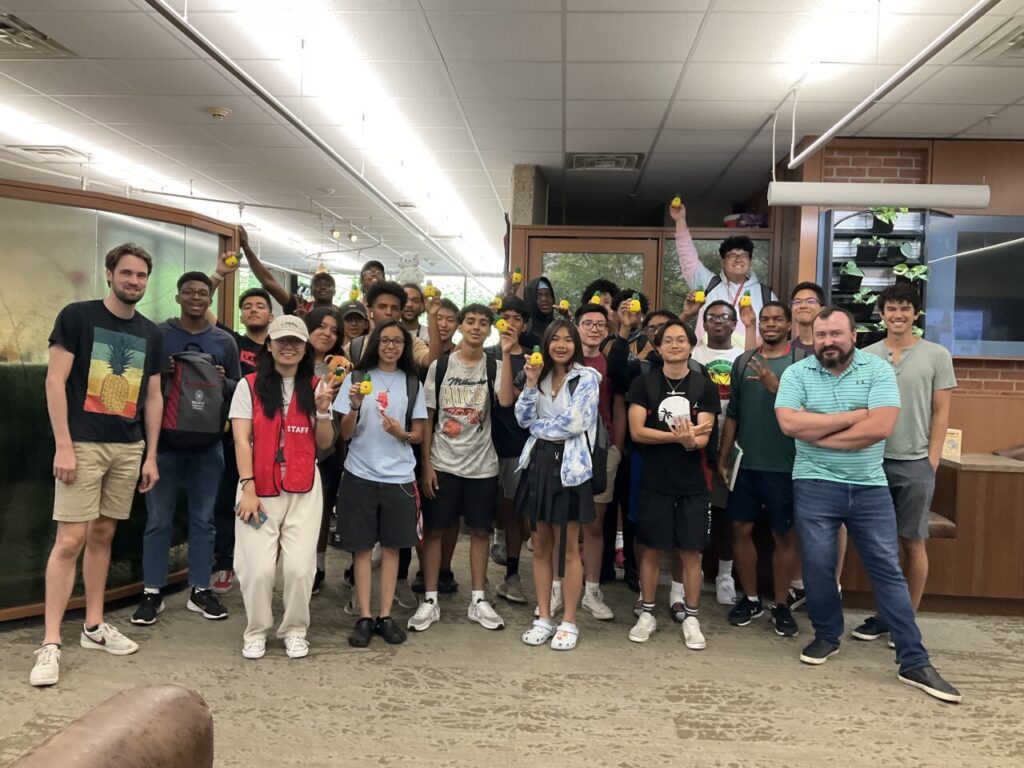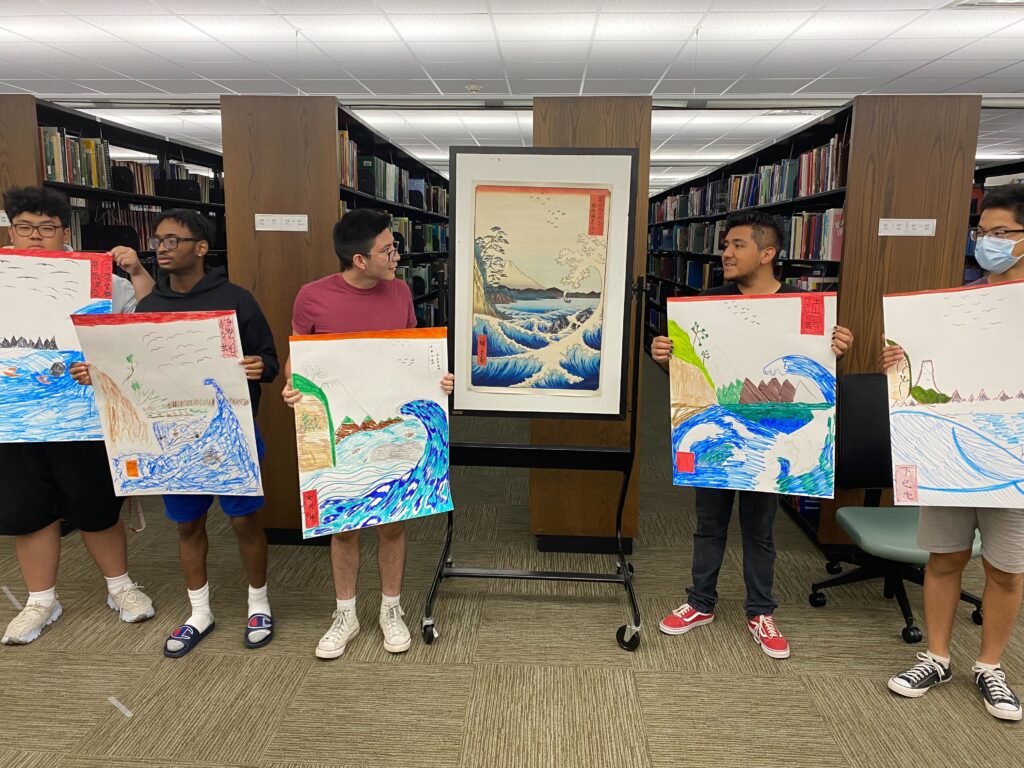Members of EnsoData’s DEI Committee Lead a Two-Day Workshop for the Future Engineers of America
In late July 2022, members of the EnsoData team, led a two-day workshop for 21 students in the Engineering and Computer Science program the University of Wisconsin-Madison PEOPLE Program. Designed for low-income and potential first generation college students, the PEOPLE Program empowers students from populations that have traditionally been overlooked and underserved for college admissions. Our two-day course was coordinated and spearheaded by Software Engineer and DEI committee member, Connor Sheedy, with an emphasis on providing the following learning experiences for the students:- Explore how engineering and science can lead to starting a business
- Discover how sleep data is collected and analyzed
- Demonstrate how we can use software and coding to solve problems
- Interact with a team to complete a common goal

Photo courtesy of the PEOPLE Program (Summer University 2022). Learn more: https://peopleprogram.wisc.edu/
Learning about the Business of Sleep Medicine
Between Fernandez, Hensen, Khan, Glattard, and Sheedy, the students in the PEOPLE program received a lot of information in a condensed format. Knowing powerpoint presentations aren’t exactly thrilling for high schoolers, our team focused on engaging activities and more of a Q&A format for the educational sessions.Who is EnsoData?
Fernandez, Hensen, and Glattard shared insights with the students on the origins of the company. Both Fernandez and Hensen shared emphasized the value they gained from starting their business while at UW-Madison. Fernandez also highlighted the importance of failure, of persistence, and of the feeling you get when you succeed. How it can be fleeting, empowering, and motivating all at the same time. Between questions about success stories and wanting to hear about specific failures, the kick-off session really got the creative juices flowing for the team building and engineering activities.What are Sleep Programming Integrations Actually Doing?
Kicking off day two, this presentation led by the integration king himself, Connor Sheedy, focused on a demo of the NoxT1 HSAT device. Sheedy, Glattard, and Sadnick shared insights on how the device is set-up, what patients go through when wearing it, and even put the device on to demonstrate. Students were very engaged, discussing how uncomfortable it looked and if there were other types of devices used for sleep studies. From there, the team demonstrated how EnsoData interacts with the studies through the EnsoViewer Demo.Tour of a Sleep Lab
In the final educational presentation after lunch on day two, Khan flexed his sleep muscles and walked students through a little bit of the nitty gritty behind sleep medicine. Keying in on how sleep medicine fits into healthcare, what patients go through, and what a sleep tech does on a daily basis, the session drew the most questions from students. Many of the questions were around OSA (obstructive sleep apnea), and multiple students noted their family members who snore and might need to get in for a sleep test. Students also wanted to know how EnsoData was increasing access to care, which was a great opportunity for Glattard aneed Khan to discuss the current and future impact EnsoSleep has on the patient care journey.Team Building Activities
Beyond educational presentations, the team wanted to make sure we were providing opportunities to get up and moving and participate in some friendly team building competitions.Marshmallow Towers
To answer a few team building questions, Grieder led the students on a literal team “building” activity. Students had to collaborate to reach a common goal: creating the tallest tower out of marshmallows and spaghetti noodles. This highly competitive group wasted no time building towers, or debating the heights and marshmallow usage from each team. Grieder led a great follow-up discussion on planning and strategies that were deployed and pitfalls experienced by each team. Here are a few comments from Grieder on the experience:“If there are two things I’m passionate about, it’s getting more women racing bicycles and more women into STEM fields, and this experience allowed me to contribute to the latter,” said customer success engineer Montana Grieder. “I really enjoyed the enthusiasm and competitive spirit of the teenagers we worked with during the PEOPLE program, and I hope this experience encouraged the ladies in the group to not be afraid to pursue a degree/career in STEM.”This sentiment was felt by the students participating, as one of the female team leaders shared a note of encouragement and empowerment with the team the following day, citing Grieder’s comments. Way to go, Montana!
The Human Robot
The first programming-focused game was led by Sheedy, with support from Miller, Glattard and Sadnick. The first was a “Human Robot” activity introducing students to programming. Split into small groups, the students had to “program Robot Steve” to select a specific book off of a shelf. Students wrote code, and then attempted to “run” it by having Miller test (and attempt to break) the code. Students enjoyed the activity, throwing in additional tasks for the robot, including dancing, jumping like Mario, and walking like a duck.
Chaos Drawing
The final team building activity was all about communication, with a focus on addressing the following questions:- What is the importance of communication within a team?
- How do different styles of communication work?
- What things can be challenging about communicating with team members while under pressure or in a stressful situation?

Photo courtesy of the PEOPLE Program (Summer University 2022). Learn more: https://peopleprogram.wisc.edu/
Learning about Programming and Coding
The coding and programming sessions were the areas for our engineering team to really demonstrate their knowledge. Using coding games and competitions, the team really sparked an interest in the students in the PEOPLE program.Coding Games to Learn Basics and Level Up
The first activity for students on the programming front came through the Scratch coding community platform. Sheedy set the students up with a basic set of instructions to help them capture some basic programming concepts. Among the concepts Sheedy and Katz introduced were loops, conditionals, and variables. From there, Katz wanted to digitally mirror the Human Robot task. He instructed the students to have a cat walk up and eat bananas, then walk back, and say ‘that was yummy.’ After working on the first project, students were encouraged to create other examples on their own, with students coding the following things:- Having someone throw a ball to someone else
- Having a ball bounce around screen
- Having people dance
“Our goal with the workshop was really one of inspiration. Clearly, not every student is going to want to become a software developer, but allowing students to experience the fun side of programming and potentially have that “ah ha!” moment was what we wanted to provide. It was a pleasure working with such a fun and smart group of students. We hope to continue our relationship with the PEOPLE Program and host events like this in the future,” said Connor Sheedy, Staff Software Engineer and DEI Volunteering Committee Coordinator.





